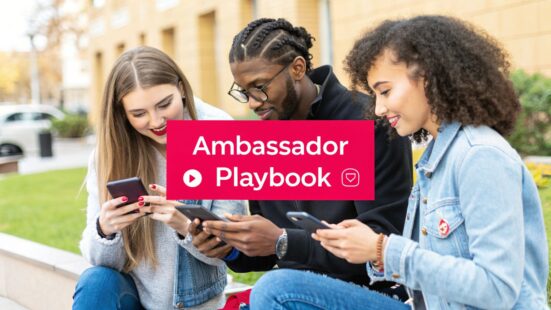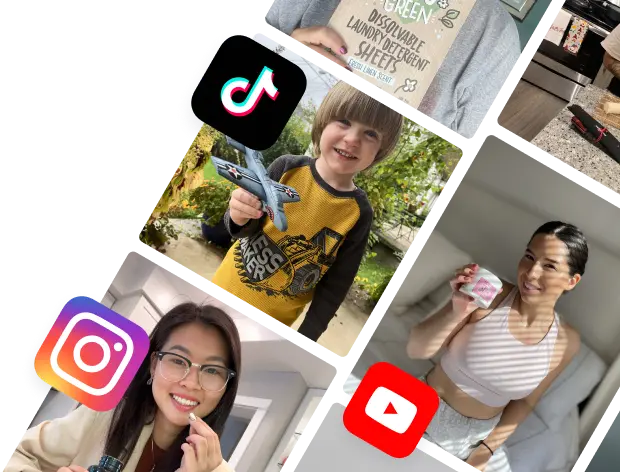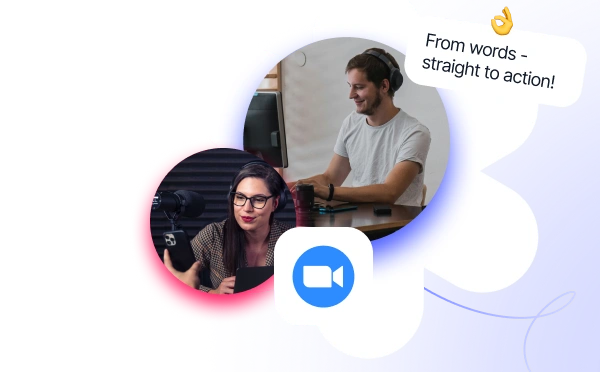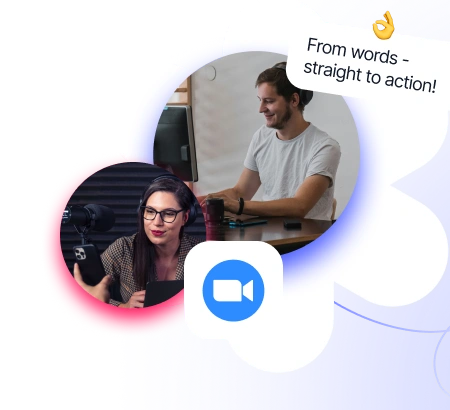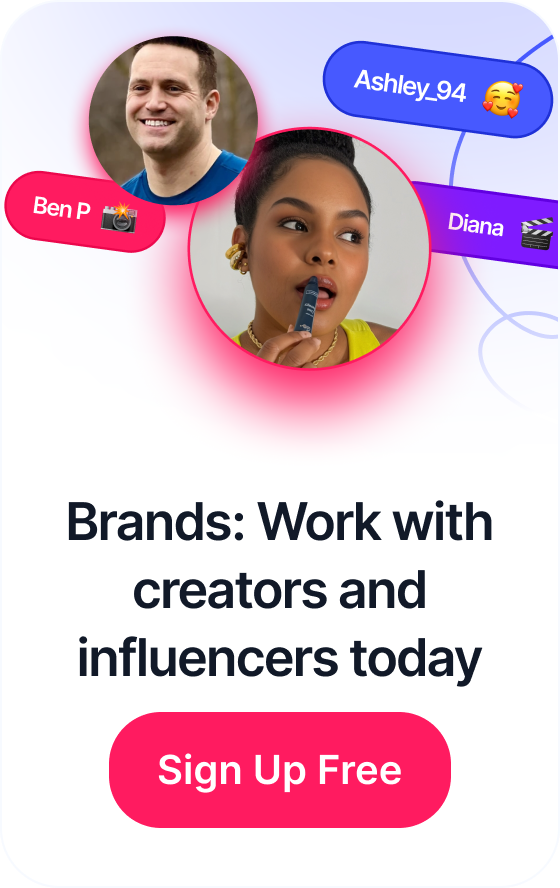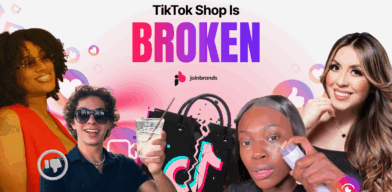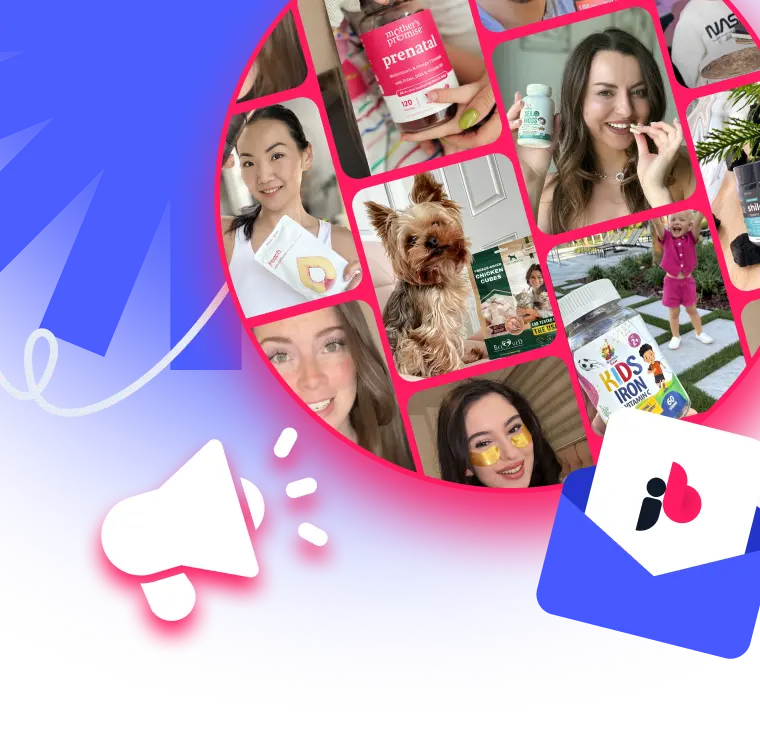 How to Go Live on TikTok: The Complete Creator’s Roadmap
How to Go Live on TikTok: The Complete Creator’s Roadmap
Forget everything you've been told about chasing massive follower counts. True brand growth comes from connection, not just reach. That's precisely why small influencers are the unsung heroes of marketing, making them the absolute best choice for long-term ambassador programs. These aren't just one-off campaigns; they're partnerships that build genuine brand loyalty from the ground up.
Table of Contents
The Real Value of Small Influencers

The pivot toward smaller creators isn't just a fleeting trend—it's a smart, strategic move that delivers powerful results. While mega-influencers offer a wide net, micro and nano-influencers give you something far more valuable: deep, authentic engagement with a dialed-in audience.
Their followers don't see them as distant celebrities; they see them as peers. That simple shift makes their recommendations feel less like an ad and more like trusted advice from a good friend.
This trust is the secret sauce for a successful ambassador program. Instead of a single sponsored post that gets lost in the feed, a long-term partnership with a small influencer creates a network of true brand advocates. They weave your products into their daily lives, generating a steady stream of relatable content that hits home with their community.
Why Engagement Trumps Follower Count
I'll say it again: a smaller, highly engaged audience is almost always more valuable than a massive, passive one. Micro-influencers drive real conversations because their content isn't just a broadcast—it's a dialogue. They're actually connecting with people.
The numbers back this up. The influencer marketing world is exploding, projected to hit a valuation of around $32.5 to $33 billion by 2025. A huge part of that growth is fueled by creators with fewer than 100,000 followers. They often see engagement rates between a staggering 5% and 20%, completely dwarfing the 1% to 3% you'd be lucky to get with most macro-influencers.
The magic of working with small influencers is that their advocacy feels earned, not bought. Their followers know, like, and trust their judgment, leading to higher conversion rates and a more sustainable return on investment for the brand.
To give you a clearer picture, here’s a quick breakdown of how these two groups stack up.
Small Influencers vs. Macro Influencers At a Glance
This table offers a snapshot of the key differences you can expect when working with smaller creators versus big-name influencers.
| Metric | Small Influencers (Micro/Nano) | Macro Influencers |
|---|---|---|
| Engagement Rate | Typically 5% – 20% | Typically 1% – 3% |
| Audience Trust | High (seen as a peer/friend) | Moderate (seen as a celebrity) |
| Content Authenticity | Feels genuine and integrated | Often looks polished and sponsored |
| Cost Per Partnership | Lower, more budget-friendly | High, can be very expensive |
| Niche Targeting | Highly specific and targeted | Broad and generalized |
| Conversion Impact | Stronger, drives direct action | Focuses more on brand awareness |
As you can see, if your goal is to build a real community and drive sales, the data points squarely toward smaller influencers.
The Power of Niche Communities
Another massive advantage is the direct line you get to hyper-specific audiences. Think about it: if you're a vegan skincare brand, who would you rather partner with? One general beauty guru with a million followers, or five micro-influencers who are passionate, respected voices in the vegan lifestyle community?
The choice is obvious. These smaller creators are the gatekeepers to dedicated niches. To get a better handle on who these partners are, check out our guide on the different types of influencers.
This targeted approach means your message lands with people who are already primed to care about what you offer. It’s the difference between shouting into a crowded stadium and having a meaningful conversation with a room full of your ideal customers.
How to Design a Program They Can't Refuse
Let’s be honest: building an ambassador program for small influencers isn't just about shipping free products and hoping for a mention. That’s a one-way ticket to getting ghosted.
The real magic happens when you design a partnership that feels like a genuine collaboration—something valuable, exciting, and built for the long haul. To create a program that influencers are actually excited to join, you need a structure that rewards their creativity and aligns with their goals just as much as your own.
It all starts with clarity. Before you even draft your first outreach email, you have to nail down what success actually looks like for your brand. Are you trying to get your name out there? Build up a library of authentic user-generated content (UGC)? Or are you focused on driving direct sales? Each of these goals requires a completely different playbook.
This initial planning phase is non-negotiable. If brand awareness is your game, you'll probably focus on content volume and reach. But if it's all about sales, you'll need airtight tracking for commissions and conversions.
This infographic breaks down the entire flow, from finding the right people to getting them fully integrated.
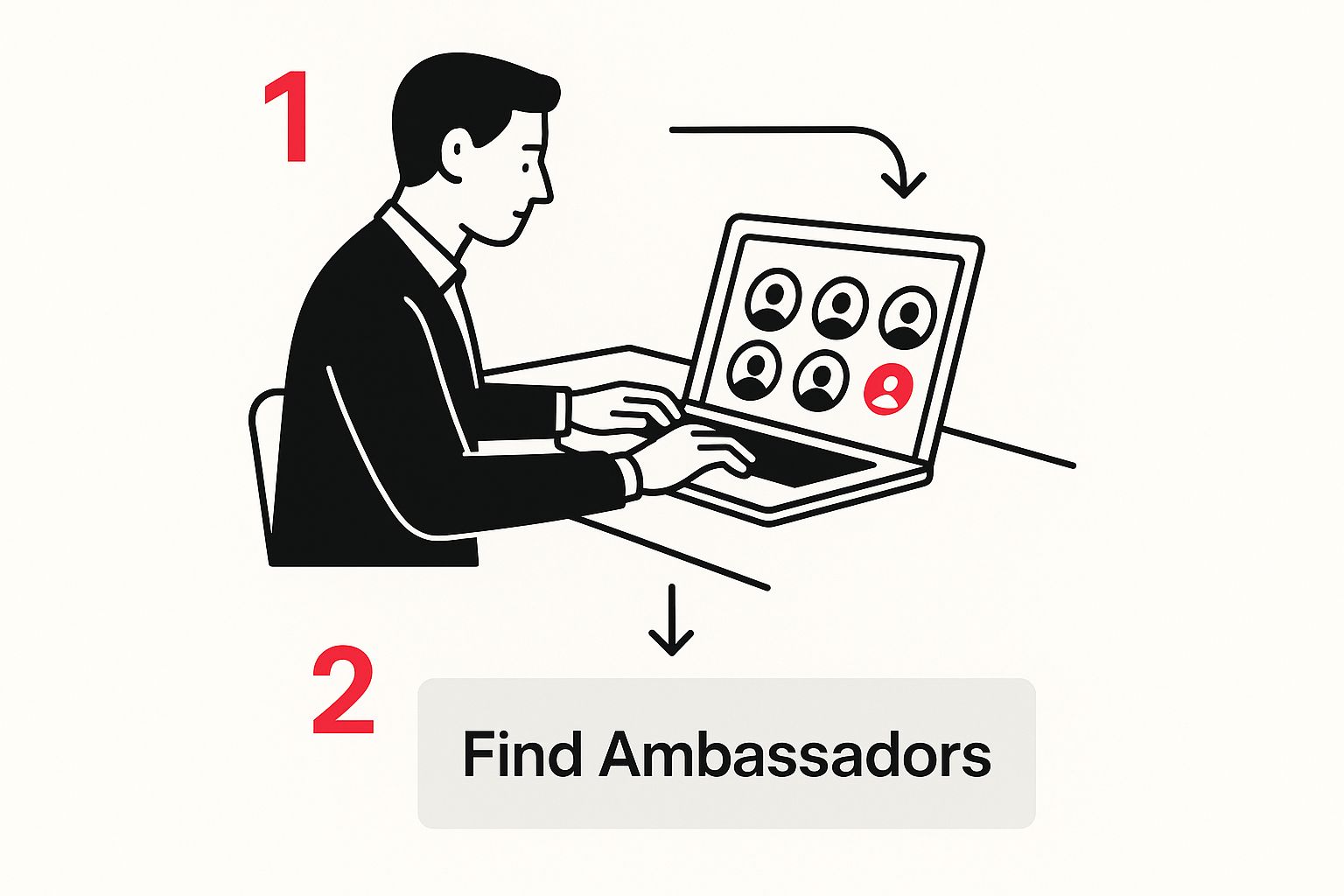
Visualizing the journey like this helps you see every step clearly, which means a smoother experience for everyone involved—no confusion, no missed steps.
Defining Your Program Goals
Your objectives are the north star for your entire program. They dictate who you recruit, how you compensate them, and what metrics you obsess over.
So, get specific. A vague goal like "increase engagement" won't cut it. A better one? "Generate 100 unique pieces of UGC from 10 ambassadors by the end of Q3." Now that's a target you can work toward.
Here are a few common goals I see brands successfully build their programs around:
- Boost Brand Awareness: This is all about getting your brand in front of fresh, highly-targeted audiences. Success is measured in things like reach, impressions, and follower growth on your accounts.
- Generate Authentic Content: Your aim here is to create a steady stream of real, relatable UGC that you can repurpose everywhere—on your site, in your ads, and across your social channels.
- Drive Sales and Conversions: This is about pure performance. You're attributing direct revenue to your ambassadors’ efforts, usually through unique discount codes or affiliate links.
Knowing your primary goal is crucial. Data shows that brand awareness is the top priority for 65% of campaigns, while 22% focus on generating content and just 13% prioritize boosting sales. This is a big reason why nearly 80% of marketers see real value in influencer marketing and are doubling down on their investment.
Structuring Fair and Motivating Compensation
Once you know what you're trying to achieve, it's time to talk money (and product). Your compensation model needs to feel like a true value exchange.
Small influencers are entrepreneurs. They may genuinely love your product, but they also need to be compensated fairly for their time, their craft, and the community they've worked so hard to build. A one-size-fits-all approach is a recipe for failure. The best programs usually mix and match different compensation methods to create a package that’s too good to pass up.
The best ambassador programs are built on mutual respect. Fair compensation isn't just about money or products; it's about showing creators you value their work and see them as true partners in your brand's growth.
Here are a few models to consider building from:
- Product Seeding (Gifting): This is the perfect starting point, especially with nano-influencers. Sending free products lets them experience your brand authentically. Just remember, this should be seen as the absolute baseline for any real partnership.
- Commission-Based (Affiliate): This is a powerful motivator. Offering a cut of the sales (typically 10-20%) driven through their unique link or code gives influencers a direct stake in the outcome. It rewards performance, plain and simple.
- Flat Fee or Retainer: When you need specific deliverables—say, three Instagram Reels or one dedicated YouTube video per month—a flat fee is the way to go. It shows you respect the effort that goes into creating high-quality content.
- The Hybrid Model: This is where the magic really happens and is often the most successful structure. A typical hybrid package might include free products, a commission on sales, and occasional flat fees for bigger campaigns or truly standout content.
As you map this out, it can be helpful to look at how other performance-based models work. You can find some great inspiration in the mechanics of an affiliate program, which often shares the same core goals of driving advocacy and delivering measurable results.
Creating Inspiring Guidelines and Seamless Onboarding
The final piece of the puzzle is building a framework that empowers creators, not boxes them in. Your content guidelines should feel like a creative spark, not a rigid instruction manual.
Give them a clear brand brief that covers your values, key talking points, and any major "do's and don'ts," but always leave plenty of room for their unique voice to come through. That’s what you’re paying for, after all.
Your onboarding process is your first impression, and it sets the tone for the entire relationship. Make it smooth, welcoming, and packed with useful info. Make sure they have everything they need to hit the ground running from day one: product details, content ideas, and a clear point of contact for questions. A strong start builds a foundation of trust that can turn a one-off collaboration into years of authentic advocacy.
Finding and Vetting Your Ideal Ambassadors

Alright, you’ve got the framework for your program. Now for the fun part: the hunt. Finding the right ambassadors isn't about aimless scrolling; it's a strategic search for creators who already live and breathe your brand's spirit.
Honestly, the most authentic partnerships kick off with people who are already fans.
So, your first stop should always be your own backyard. Dig through your social media tags, mentions, and comments. Who’s already posting about your products without being asked? These folks are your warmest leads—genuine customers who have a real story to tell.
Once you've exhausted your current community, it's time to dive into the platforms where your ideal customers hang out. That means getting your hands dirty with manual searches on Instagram, TikTok, and YouTube.
Mastering Strategic Discovery
Forget broad, generic searches. The real magic lies in finding hidden gems using hyper-specific, long-tail hashtags. If you sell sustainable yoga mats, searching #yogalover is way too broad.
Instead, get granular with terms that echo your brand's values. Think along the lines of:
#ecoconsciousyoga#sustainableyogapractice#mindfulmovementathome
This kind of focused approach cuts through the noise and puts you in direct contact with creators who are seen as authorities in their niche.
For example, using TikTok's Discover page lets you see what's trending right now—sounds, hashtags, the works. This is invaluable intel for spotting creators who are not just riding trends but are a perfect match for your brand's voice.
And if you're looking to really dial in your search, our detailed guide offers even more tactics on how to find micro-influencers who can drive real results.
Your Vetting Checklist Beyond the Follower Count
Finding someone who looks promising is just the first step. Proper vetting is what separates a killer partnership from a costly headache. Let me be clear: follower count is one of the least important metrics. What you should really care about is the quality of their engagement and the authenticity of their community.
A creator with 5,000 highly engaged followers who trust their every word is infinitely more valuable than one with 50,000 passive followers who barely notice their posts. Vet for connection, not just for clicks.
Before you even think about reaching out, run every potential candidate through a thorough checklist. Look for the green flags that signal a great partner and the red flags that tell you to walk away.
Engagement Quality Checklist:
- Comment-to-Like Ratio: Are their posts sparking actual conversations? Or is it just a sea of "Nice pic!" comments? You want to see thoughtful questions and real discussion.
- Audience Authenticity: Use a free online tool to run a quick audit for fake followers. A high percentage of bots or suspicious accounts is a massive red flag.
- Content Alignment: Does their overall vibe—their aesthetic, their tone—match your brand? If you're a minimalist skincare brand, a creator with a loud, flashy feed probably isn't the right fit, even if their numbers look good.
- Past Partnerships: Check out their previous sponsored content. Does it feel forced and salesy, or is it woven naturally into their feed? This tells you a ton about their approach to brand collaborations.
Crafting Outreach That Actually Gets a Response
Small influencers are absolutely bombarded with generic, copy-paste outreach messages every single day. If you want to stand out, your first message has to be personal, respectful, and lead with value.
Never, ever start by asking for something. Start by giving them a reason to care.
Your outreach needs to prove you've actually paid attention to their content. Mention a specific post you loved and explain why it resonated with you and your brand. This simple act shows you see them as a unique creator, not just another name on a spreadsheet.
Keep your initial message short and sweet. Introduce your brand, explain why you think they’re a perfect fit, and briefly touch on the partnership opportunity. Wrap it up with a clear, low-pressure call to action, like asking if they'd be open to hearing more. This personalized approach is your best shot at kicking off a strong, long-term relationship.
Nurturing Relationships for Long-Term Advocacy
Alright, you've onboarded your first wave of small influencers. Pop the champagne, but don't kick your feet up just yet. The real work is just getting started.
Think of your ambassador program as a garden, not a vending machine. You can't just put a token in and expect a perfect result. It needs consistent care and attention to grow into something special. This shift in mindset—from short-term campaigns to long-term relationships—is genuinely the secret sauce to making these programs work.
And it's not just a hunch; the whole industry is moving in this direction. The smart money is on cultivating sustained partnerships, especially with micro- and nano-influencers. In fact, nearly half (49%) of brands are now focusing on long-term collaborations with these smaller creators to build real, sustained audience trust. It makes perfect sense when you realize 82% of shoppers are highly likely to follow a recommendation from a micro-influencer they trust.
At its heart, a great ambassador program is really a supercharged customer advocacy program. The goal is to make your creators feel like true insiders, not just hired guns.
Build a Thriving Community Hub
You absolutely have to give your ambassadors a place to call home. A space where they can connect with you and, just as importantly, with each other. A random email chain or a few DMs here and there just isn't going to build the kind of community you need.
This is where a private Slack or Discord channel becomes a total game-changer. It’s what turns a scattered group of individuals into a tight-knit crew. This central hub does a few things really well:
- A Direct Line: It’s the perfect spot to drop brand news, new campaign briefs, and any other important updates. No more getting lost in an inbox.
- Peer Support: This is where the magic happens. Ambassadors can trade content tips, celebrate each other's wins, and build genuine friendships.
- An Open Feedback Loop: It gives you a safe space to float ideas for new products or marketing campaigns and get honest, real-time feedback before you go live.
Treat it like your brand's exclusive clubhouse. A little effort here goes a very long way in making people feel valued and connected.
Treat your ambassadors like an extension of your marketing team. The more they feel like insiders who are contributing to the brand's journey, the more passionately and authentically they will advocate for you.
Empower Them with Trust and Creative Freedom
If you want to kill your program's effectiveness, start micromanaging your creators. It's the fastest way to get stiff, robotic content that nobody will believe.
You picked these people for their unique voice and their connection to an audience. So, trust them. Let them do what they do best.
Of course, you need to provide clear guidelines. But instead of handing over a rigid script, give them a creative brief that outlines the goal, the key messages, and any hard no's. Then, get out of their way. The more creative freedom you give, the more authentic and powerful the content will be.
For instance, a skincare brand could ask its ambassadors to create a Reel showing how they use a new serum in their "unwinding routine" after a long day. That prompt provides a clear theme but leaves the execution wide open. You’ll get everything from a bubble bath scene to someone chilling with a book, and all of it will feel real.
Fuel Their Loyalty with Insider Perks
To keep your best people engaged for the long haul, you have to offer more than just the basics. Exclusive perks are what make ambassadors feel special and reinforce that they're part of the inner circle.
And these perks don't have to be expensive. Often, the best ones are about access and recognition, not just money.
- Early Product Access: Let them get their hands on new products before anyone else. This creates genuine excitement they can’t wait to share.
- Exclusive Brand News: Make them the first to know about a huge upcoming sale, a new partnership, or a big company milestone.
- Feature Their Content: When they create something amazing, shout it from the rooftops! Repost their content on your official channels (and tag them, obviously). It gives them huge exposure.
- Co-Creation Opportunities: This is next level. Invite your top performers to help you name a new product, design a new feature, or brainstorm your next big campaign.
When you consistently put in this effort, you stop having transactional partnerships and start building a passionate community. These creators become more than just collaborators—they become your most powerful, believable advocates.
Measuring the Metrics That Actually Matter
Getting your ambassador program off the ground is a fantastic milestone, but it's really just the beginning. Now comes the hard part: proving it actually works. It's so easy to get mesmerized by flashy vanity metrics like follower counts and likes, but those numbers rarely tell the full story of your program's impact.
To really get a grip on the value your ambassadors are creating, you have to zero in on the key performance indicators (KPIs) that tie directly back to your business goals. This isn't about chasing social media trends; it's about collecting cold, hard data to show a clear return on your investment.
Beyond Likes and Follows
The first mental shift you need to make is moving away from passive metrics and toward action-oriented ones. A "like" is nice, but a click that leads to a sale or a new email signup is what actually moves the needle for your business. When you build ambassador programs with small influencers, you're creating an engine for measurable action.
This means you absolutely need a way to attribute specific results to individual ambassadors. The two most straightforward and effective methods I've seen are:
- Unique Affiliate Links: These are trackable URLs you give to each ambassador. When someone clicks their link and buys something, you know exactly who sent them. Simple and powerful.
- Custom Discount Codes: A classic for a reason. Codes like "SARA15" are easy for customers to remember and even easier for you to track on the backend of your e-commerce platform.
Using these tools turns your program from a fuzzy "brand awareness" play into a legitimate, high-powered sales channel. They give you undeniable proof of the revenue your ambassadors are driving.
Key Performance Indicators for Ambassador Programs
The specific KPIs you obsess over will naturally depend on your program's main goal. Are you after brand awareness, a steady stream of content, or straight-up sales? It’s critical to track the right data to paint an honest picture of your success.
I've put together a table that breaks down the most important metrics to keep an eye on, depending on what you're trying to achieve.
Key Metrics for Ambassador Program Success
This table outlines the essential KPIs for measuring the performance of your ambassador program, categorized by common marketing objectives.
| Objective | Primary Metric | How to Track It |
|---|---|---|
| Brand Awareness | Reach & Impressions | Use each platform's native analytics to see how many unique accounts saw the content. |
| Engagement | Engagement Rate (Likes + Comments + Shares ÷ Followers) | Calculate this for each ambassador's posts to gauge how well their audience is connecting with the content. |
| Content Generation | Volume of User-Generated Content (UGC) | Track the number of posts, stories, and videos created using your branded hashtag or campaign tag. |
| Website Traffic | Click-Through Rate (CTR) | Monitor clicks on unique affiliate links through your chosen tracking software or e-commerce platform. |
| Sales & Conversions | Conversion Rate | Track sales generated from unique discount codes or affiliate links right in your e-commerce dashboard. |
Tracking these metrics gives you a complete, 360-degree view of how your program is performing. It helps you quickly spot what's working, who your top-performing partners are, and where you might need to make adjustments. If you really want to get into the weeds on the financial side, our detailed guide explains how to measure influencer marketing ROI in depth.
Analyzing Content and Gathering Feedback
Numbers tell one part of the story, but the qualitative data—the human element—is just as crucial. The content your ambassadors are creating is an absolute goldmine of customer insights.
Pay close attention to the sentiment in the comments. Are people excited? Are they asking smart questions about the product? This organic feedback is incredibly valuable for understanding how your brand is actually being perceived out in the real world.
Don’t just track the data—talk to your ambassadors. They are on the front lines, interacting with your target audience every single day. A simple quarterly survey or a quick chat in your community channel can reveal insights that raw numbers never will.
Ask them what's resonating with their audience and what's falling flat. This direct feedback loop is the secret to optimizing your program over time. It helps you refine your messaging, improve your products, and—most importantly—strengthen your relationships with the creators who are pushing your brand forward. When you combine hard data with human insights, you create a powerful system for continuous improvement and sustainable growth.
Answering Your Ambassador Program FAQs
Even with the best-laid plans, jumping into ambassador programs always kicks up a few questions. That's totally normal. Let's walk through some of the most common hurdles brands face so you can launch your program with confidence.
Think of this as your quick-start guide for handling those "what if" moments. We'll give you straight answers to sidestep the usual pitfalls and get your program on the right track from day one.
What Is a Fair Compensation Model?
This is the big one, and the honest answer is: there's no magic number. A "fair" model really depends on your goals, your budget, and the kind of relationship you want to build. What I've seen work best, time and time again, is a hybrid approach.
Product seeding is a fantastic place to start, especially with nano-influencers. Gifting products lets them genuinely experience your brand, which is a must. But if you want real loyalty that lasts, you can't stop at freebies.
A commission structure is a huge motivator. Offering 10-15% on sales they drive with a unique code or affiliate link gives ambassadors real skin in the game. It’s a performance-based reward that makes them feel like a true partner in your business.
For more specific asks—like a certain number of Instagram Reels or TikToks per month—a small flat fee or monthly retainer makes sense. This acknowledges the creative work and time they're putting in, showing you truly value their effort.
The best strategy? Be flexible. Chat with each potential ambassador and put together a package that feels like a genuine win-win for both of you.
How to Ensure Brand Consistency
This is a tricky balancing act. You need your message to stay consistent, but you don't want to smother the creativity that made you pick that influencer in the first place.
The secret is to provide a solid framework, not a rigid script.
Instead of handing them talking points, give them clear, concise brand guidelines. This document is your program's bible and should cover things like:
- Your Mission & Core Values: What does your brand really stand for?
- Key Messaging: What are the top one or two things people need to know about your product?
- The "Do's and Don'ts": Are there certain words to avoid? Any competitors you'd rather not be featured alongside?
Once you've laid that foundation, let them run with it. Encourage them to share their own stories about how they use and love your product. Remember, you chose them for their voice and connection. Stifling that will just lead to content that feels like a bad ad and doesn't perform.
What Are the First Steps to Launch a Pilot Program?
Trust me on this one: don't go from zero to a hundred. Jumping into a massive program right away is a classic mistake. The smart play is to start small with a pilot program. It lets you test everything out, get feedback, and prove the concept works before you pour more resources into it.
Here’s a simple roadmap to get your pilot off the ground:
- Define One Clear Goal: Don't try to boil the ocean. Pick a single, measurable target. Maybe it's, "Generate 50 pieces of user-generated content in the next 3 months."
- Handpick 5-10 Ideal Influencers: Find creators who are already fans or just a perfect fit for your niche. Genuine enthusiasm is gold at this stage.
- Create a Simple Program Outline: Keep it dead simple. Detail the expectations (e.g., one post and two stories per month) and the compensation (e.g., free product plus a 10% commission code).
- Craft Personalized Outreach: No mass emails. Write a real, human message to each influencer explaining why you think they'd be a great partner.
- Set Up a Basic Tracking System: You don't need fancy software yet. A simple spreadsheet to keep track of your ambassadors, their content, codes, and performance is all you need for a pilot.
What Tools Can Help Manage a Program?
When you're just starting, you absolutely do not need to drop a ton of cash on expensive software. You can run a killer ambassador program with a handful of free or cheap tools you probably already use.
For keeping everything organized, Google Sheets or Airtable are your best friends. They're perfect for building a simple database of your ambassadors, logging their content, and tracking key metrics.
To build that crucial sense of community, set up a private communication channel. A dedicated Slack channel or even a private Instagram group is perfect for sharing updates and letting your ambassadors connect with each other.
For tracking sales, your e-commerce platform likely has you covered. Platforms like Shopify and WooCommerce make it incredibly easy to create and monitor unique discount codes. If you’re using affiliate links, a service like Bitly can help track clicks and show you where your traffic is coming from.
Later on, when your program grows (usually around the 20-25 ambassador mark) and a spreadsheet starts to feel chaotic, then you can look into dedicated influencer relationship management (IRM) platforms. For now, simple is smart.
Ready to find the perfect creators for your new ambassador program? JoinBrands makes it easy to connect with over 250,000 influencers, UGC creators, and TikTok Shop affiliates. Our platform helps you manage everything from creator discovery and communication to content approval and payment, so you can launch and scale your program with confidence. Find your ideal brand ambassadors and start building authentic partnerships today.
